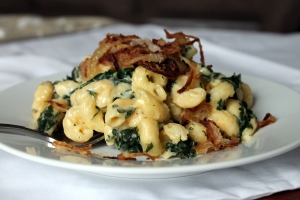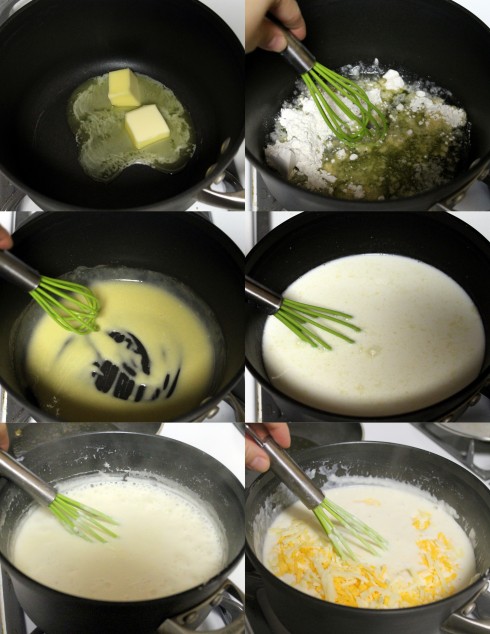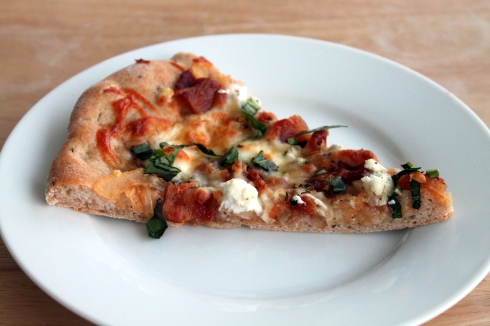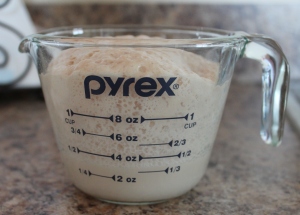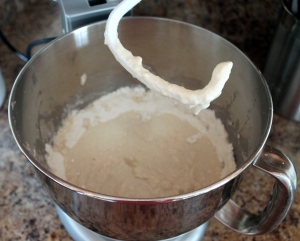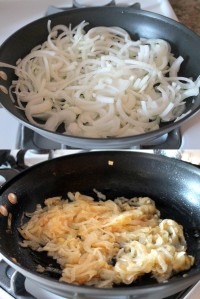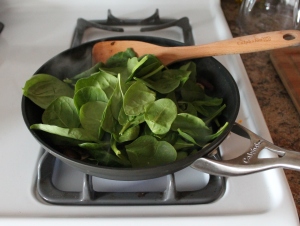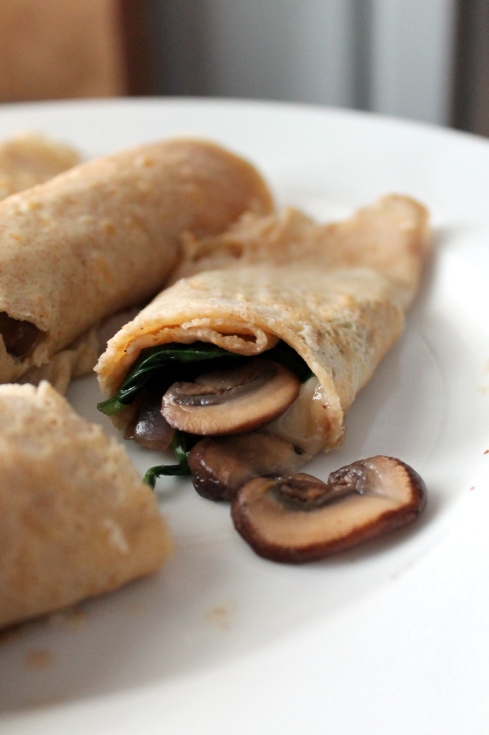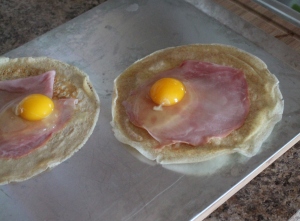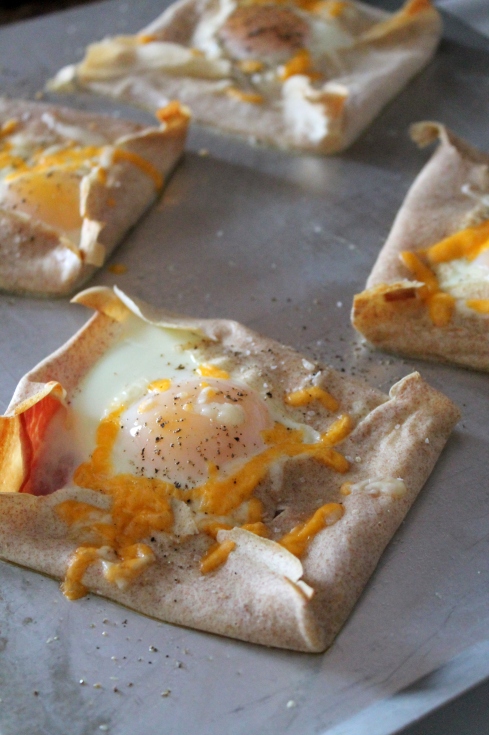As with take-out pizza versus homemade, there is also a time and a place for boxed mac and cheese and a time for homemade. Is it bad to admit that I still enjoy the blue box variety? I feel like that’s ok, since I appreciate the blue box kind for completely different reasons than a gourmet homemade version (namely nostalgia and the freedom to douse it in ketchup – which is probably gross to many people – oops). Today’s recipe is for a “grown up” mac and cheese (with spinach and crispy fried shallots on top) – but really it’s just for a homemade variety – since the recipe is completely adaptable for all tastes and ages.
Once you know the basic process for making macaroni and cheese, the possibilities are endless. This is a more classic version of macaroni and cheese, with cheddar and Gruyère (with spinach added to make me feel slightly less guilty about this indulgent dinner – and really, the cheese and pasta mellow out the spinachy taste – amen). The crispy shallots (which to me are a more gourmet spin on French’s fried onions) add a lovely salty and tangy bite – don’t skip them – they really add that extra something. But, like I said before, the possibilities are endless – you can use any combination of cheeses and/or veggies and/or meat you want (or use no veggies or meat at all!). One of my personal favorites is using Pepper Jack cheese and tiny broccoli florets for a so-called “Mac and Jack” spicy macaroni and cheese. Yum.
This is a quick version of macaroni and cheese, which skips any baking in the oven. But you can certainly pour the macaroni into a baking dish, top with bread crumbs and/or cheese (and/or crispy shallots!) and bake until golden brown. I can’t decide which method I like better – without baking, the sauce stays so luxuriously creamy and saucy; but when baked, the crunchy golden brown top is pretty delicious too. I’m torn.
Mac and Cheese with Spinach and Crispy Shallots
Time: 25 minutes; Yield: 8 servings
- 3 tablespoons butter
- 3 tablespoons all-purpose flour
- 4 cups whole milk
- 3 cups shredded cheese (I recommend a mix of aged sharp cheddar, Gruyère and/or Jack)
- 1 teaspoon Dijon mustard
- 1/2 teaspoon Old Bay Seasoning
- Few grates of fresh nutmeg
- 8 ounces fresh spinach, chopped finely (optional)
- 1 pound cavatappi (hollow corkscrew shaped pasta), or any other noodle you like
- 2 large shallots, thinly sliced
- Flour, to coat shallots
- 4 tablespoons olive oil, or enough to generously coat a saute pan
- Salt and pepper
Making the Sauce: Melt the butter in a medium saucepan over medium heat, then whisk in the flour. Cook for about 2 minutes, then add milk. Bring to a boil (~8 min), then reduce to a simmer for 10-15 minutes or until thickened, whisking often to prevent burning. Season with salt and pepper. Once thickened, add the cheeses, mustard, Old Bay and nutmeg, whisking to combine.
Cooking Pasta and Spinach: Boil pasta according to package directions. When the pasta is ready, add the chopped spinach to the boiling water to blanch, then drain both the pasta and spinach (ensuring to get as much water out of the spinach as possible).
Crispy Shallots (aka grown up French’s fried onions): While sauce and pasta are cooking, toss the thinly sliced shallots with enough flour to coat. Heat olive oil in a saute pan over medium-high heat, add shallots, and cook until crispy and golden brown. Remove to a paper-towel lined plate to drain excess oil.
Assembly: When sauce is finished and pasta and spinach are cooked, pour sauce on top of pasta and spinach and toss to coat. Don’t add all the sauce all at once, in case it’s too much (wait, is that possible?!). Top with crispy fried shallots and serve immediately.
Isn’t it surprisingly easy to make homemade mac and cheese? I think so :) What other flavor combinations do you think would be good? I’m thinking anything with bacon would be pretty amazing, but maybe that’s just me….

